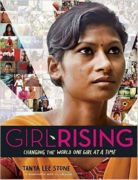
The jataka tales—stories of the Buddha’s past lives (in both human and animal form)—were first said to have been told by the Buddha himself 2,500 years ago. In print since the 5th century BCE, 550 jataka tales comprise part of the oldest Buddhist text, the Pali Canon. From this wealth of folklore, award-winning author and storyteller Rafe Martin has chosen ten tales that illustrate the ideals of the Buddhist paramitas, or “perfections” of character: giving, morality, forbearance, vitality, focused meditation, wisdom, compassionate skillful means, resolve, strength, and knowledge.Endless Path presents these ancient stories, usually reduced to children’s tales in the West, for adults, reconnecting modern seekers with the more imaginative roots of Buddhism. The jatakas help readers see their own lives, their failures and renewed efforts, in the same light as the challenges the Buddha faced—not as obstacles but as opportunities for developing character and self-understanding. Endless Path demonstrates the relevance of these tales to Buddhist lay practitioners today, as well as to those more broadly interested in Buddhist teaching and the ancient art of storytelling.










